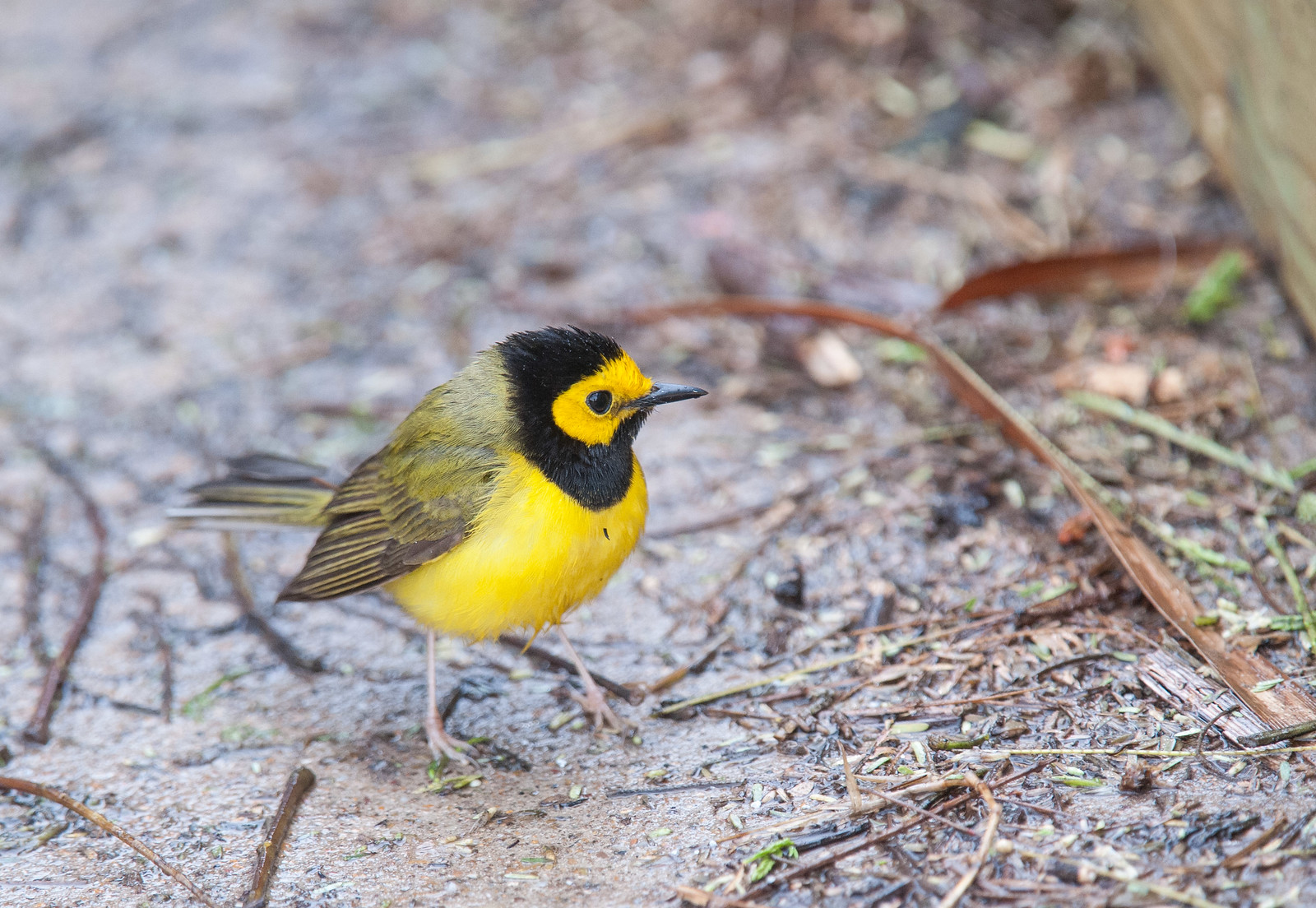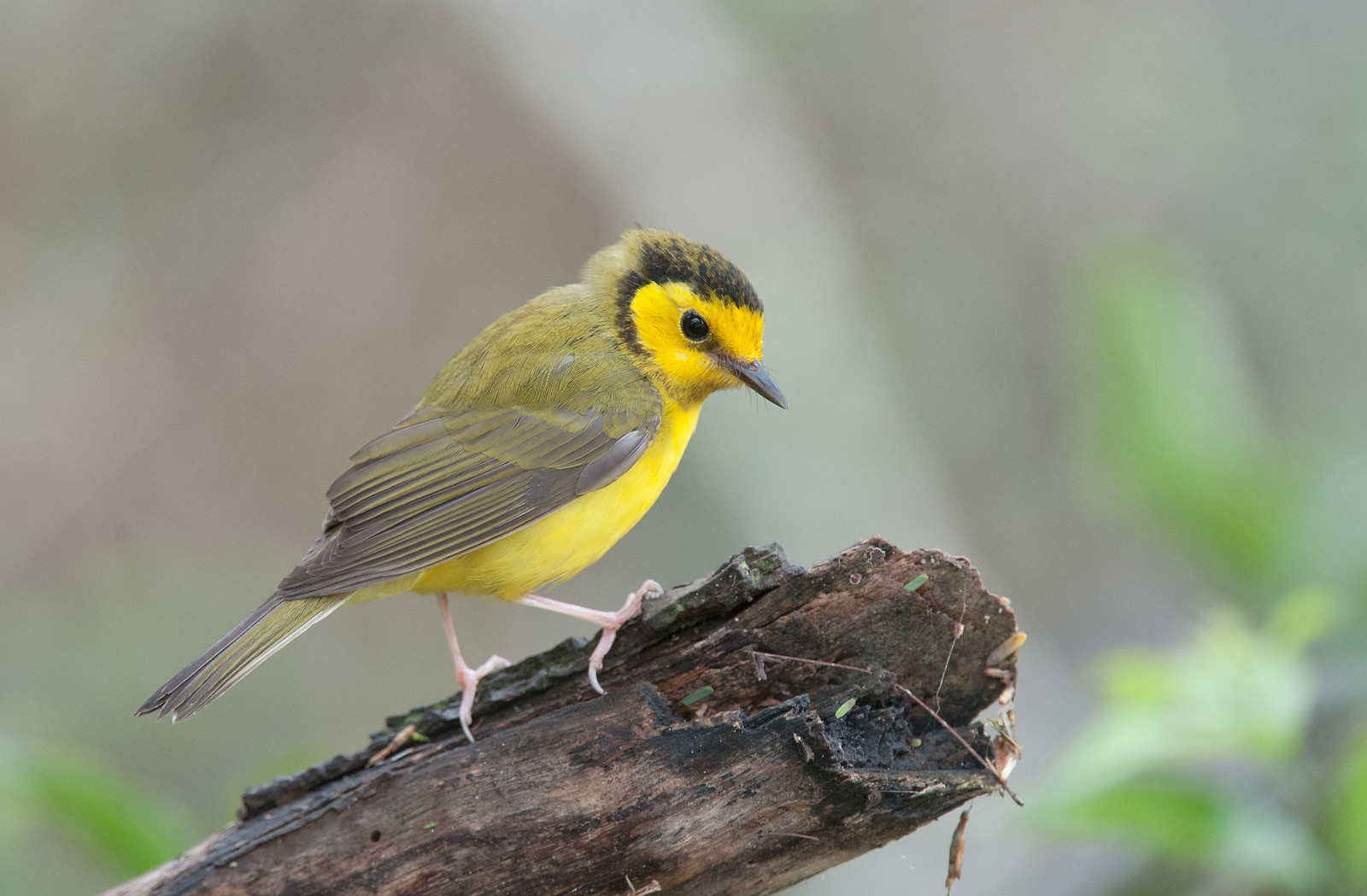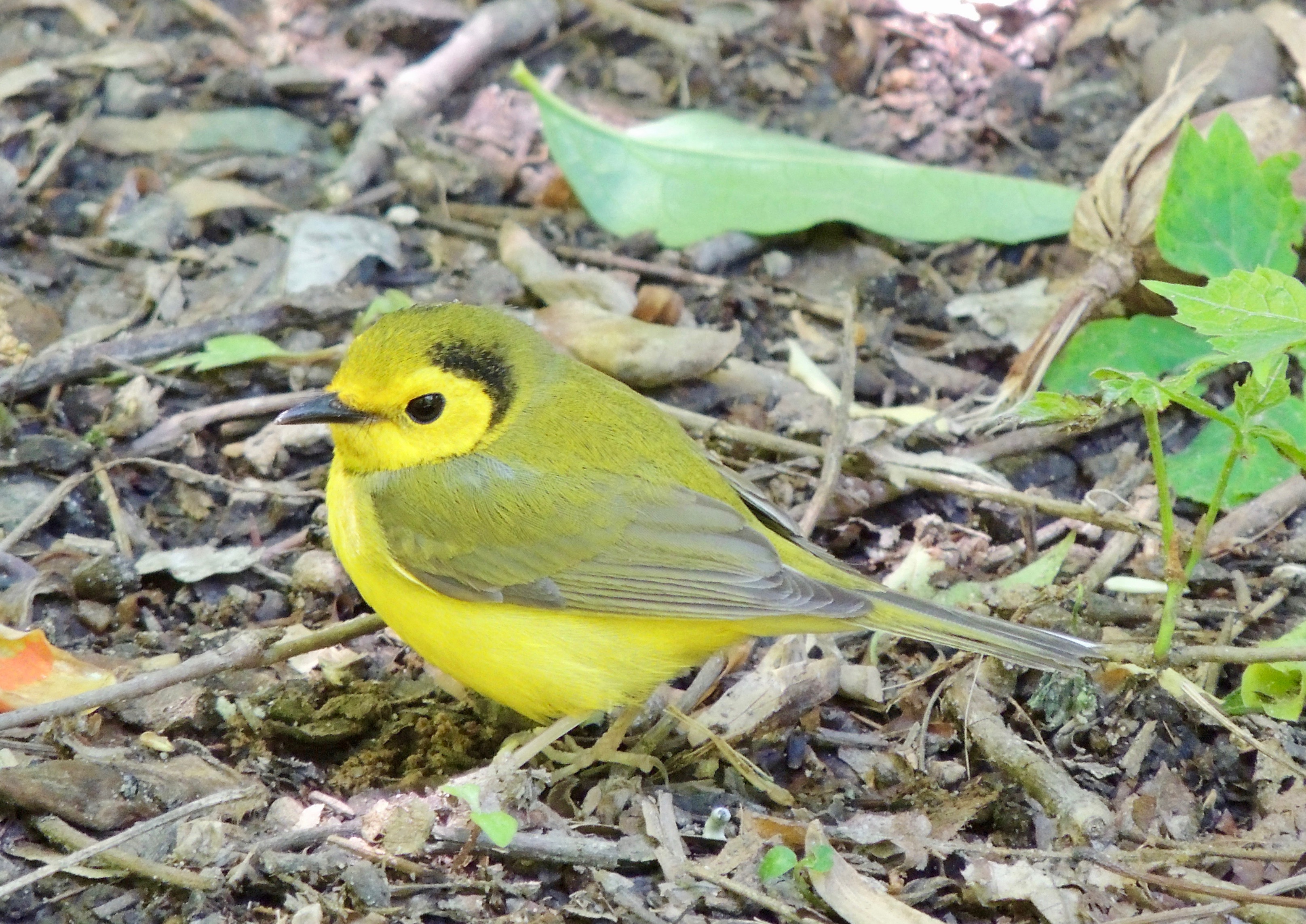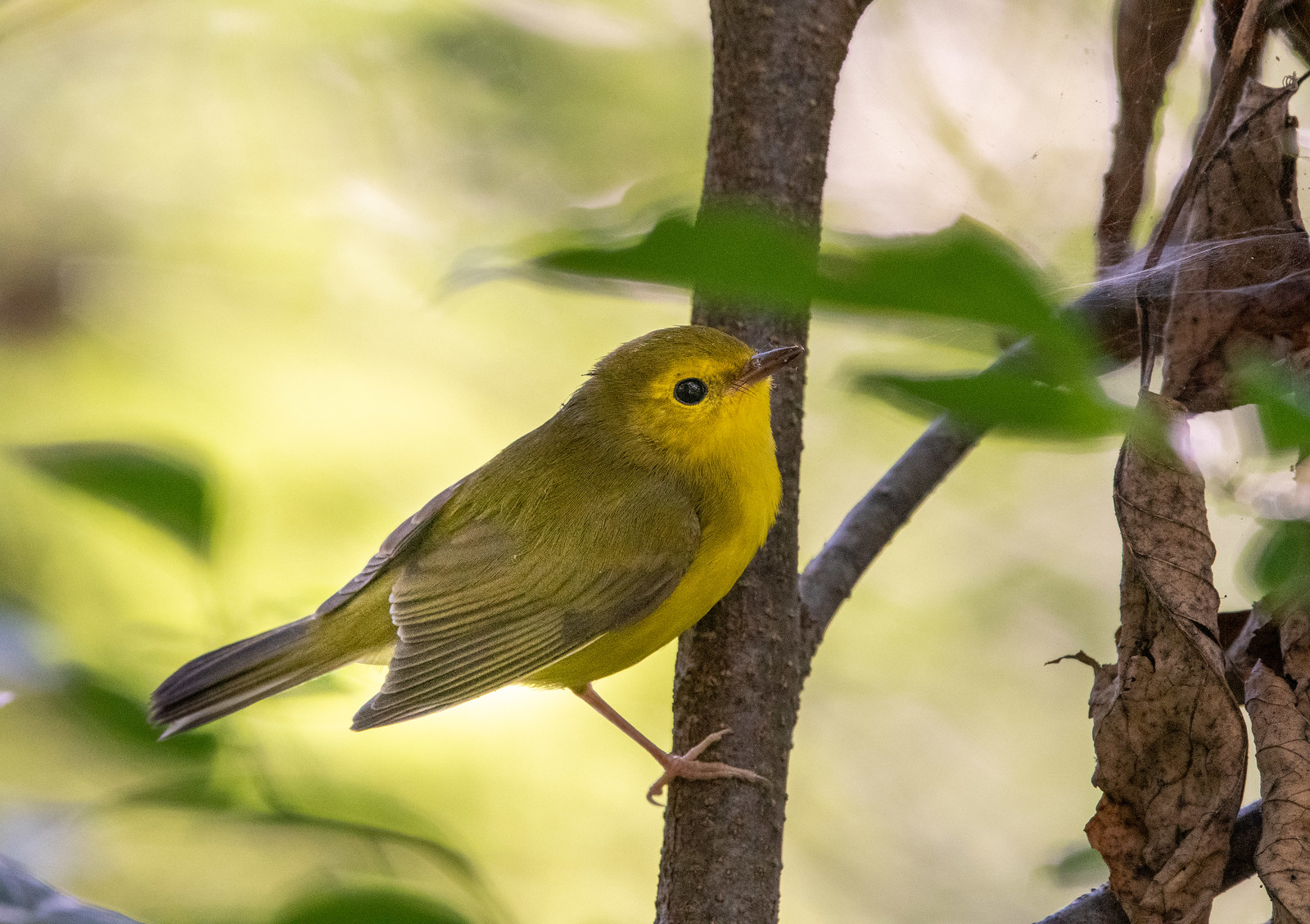| Early Spring Date: | April 12 |
| Late Spring Date: | May 25 |
| Best Dates to See in Spring: | April 25 - May 7 |
Spring: Hooded Warblers show up at Monticello Park every spring, but never in great numbers. They sometimes are easier to hear than to see. Most come through the park early in the spring, and your best chance to see one is during the last week in April and the first week in May. They nest in the Washington metro area, but not at Monticello. Their preferred nesting habitat is in dense understory of deciduous forests, often near water.
Fall: Only about 4 Hooded Warblers are recorded at Monticello each year during fall migration. The most likely time to see one is during the last week in September.
Where to See Them in the Park
Hooded Warblers usually stay low to the ground, but they sometimes can be seen in trees 15-20 feet off the ground. They often hang around on the ridge, especially near the fence line by the Kust property. They also have been seen on the knoll side in the vegetation in the top half of the park.
Physical Description


The male is a large warbler with a distinctive black hood that extends down his neck to form a black bib. The bright yellow face has a large dark eye in the middle. The underparts are yellow, and the back is olive, with no wingbars. The legs are long and pink.

Like the male, the adult female Hooded Warbler has large black eyes and long pink legs. There can be a trace of black on her throat, but no black on her breast. Some females have a partial hood that stretches across the front of her head, but the black is not nearly as extensive or as pronounced as on the male.

The amount of black on the head can vary. Some adult females have crescents of black behind their eyes, but the two crescents are not connected.

Other adult females can be difficult to identify, because they have only a shadow of a black cap.

Both male and female Hooded Warblers frequently flash their white tail feathers in flight and when foraging. The three outer tail feathers on each side have long white tips.
Fall: The plumage of Hooded Warblers does not vary much between spring and fall.
Vocalizations
The song of the Hooded Warbler has one of the favorite mnemonics among Monticello birders — I-wanna-renta-video, or a weeta weeta weetio. The song is loud, and some males sing it frequently, which can help in locating one.
Hear the vocalizations of the Hooded Warbler.
Notes
In a study of 32 species of warblers, the Hooded had the largest eyes. Some of the thrushes who, like the Hooded Warbler, spend a lot of time on forest floors also have large eyes, which allow them to see better in low-light.
Origin of Names
Common Names: Hooded from the black hood. The New World Warblers were named for their similar appearance to European warblers, to whom they are not related. Most of the New World warblers do not warble (sing continuously with notes that change frequently).
Genus Name: Setophaga means moth eating.
Species Name: Citrina means like a citrus or lemon tree, from the yellow face.
Hooded Warbler video footage
Return to the Index
